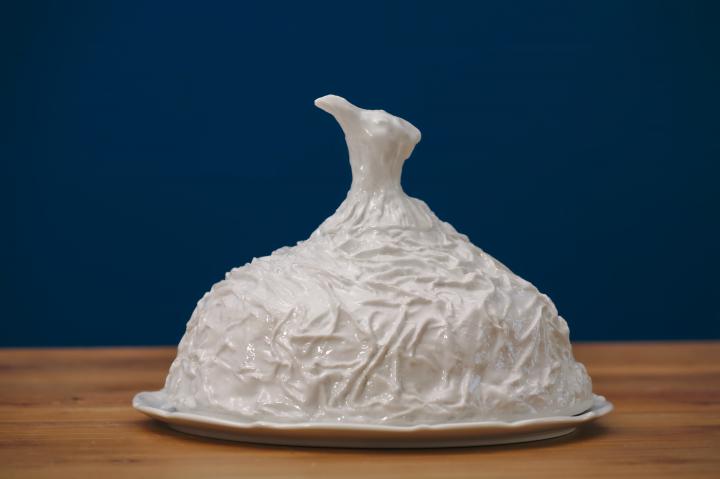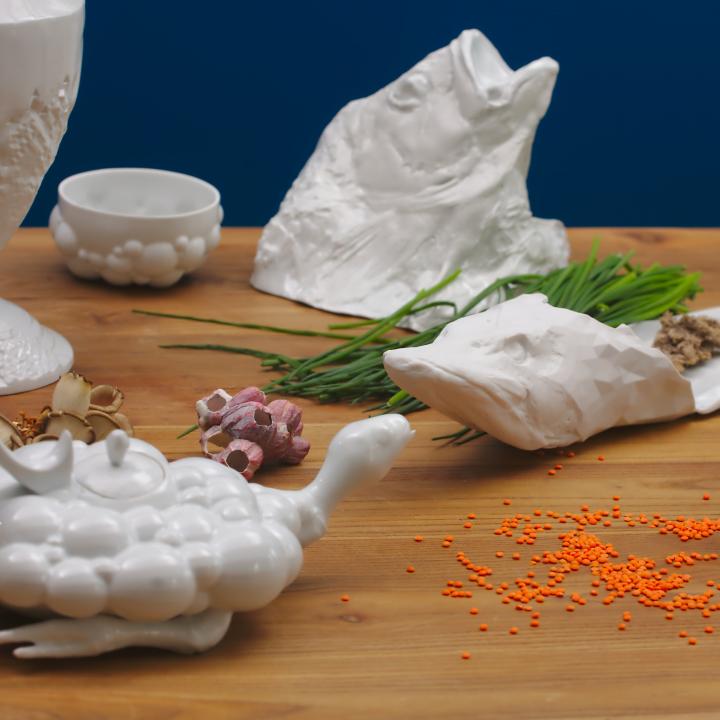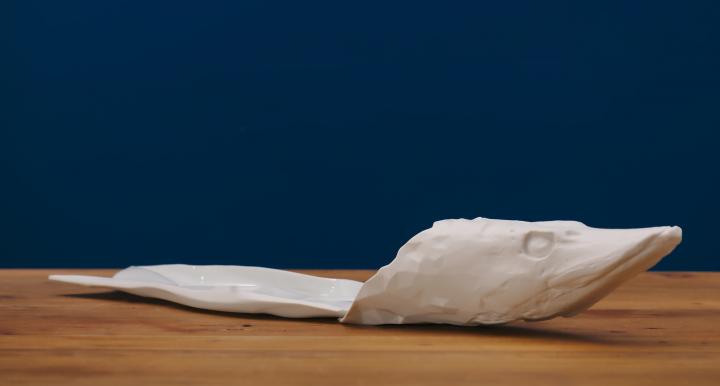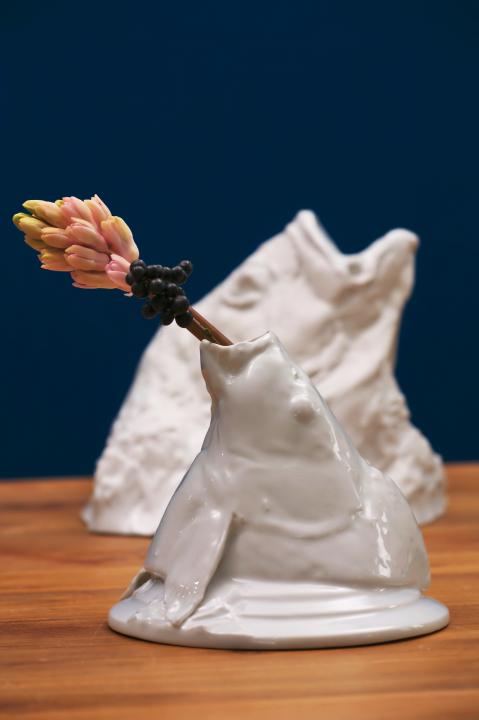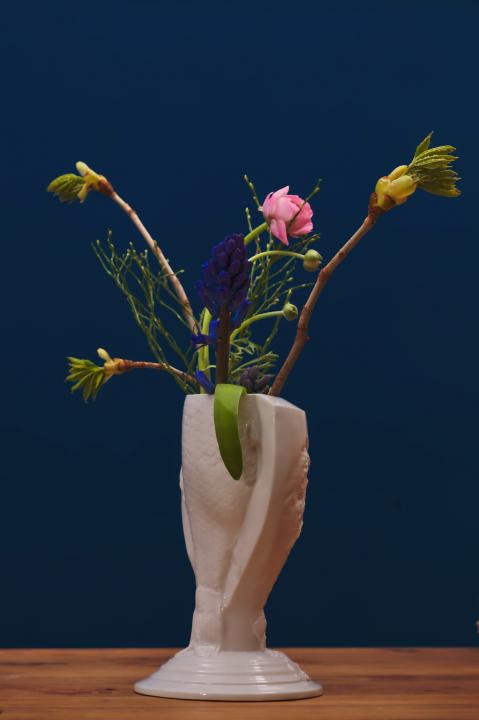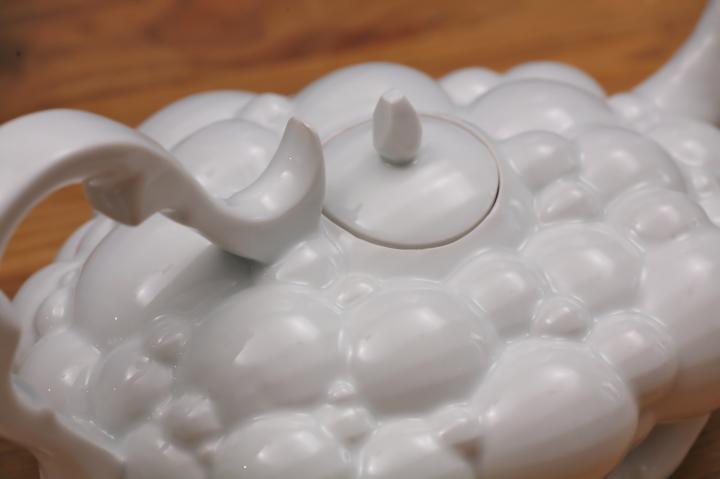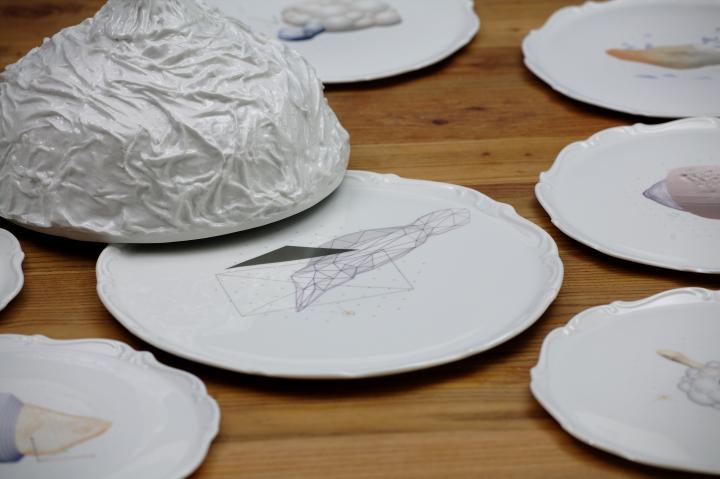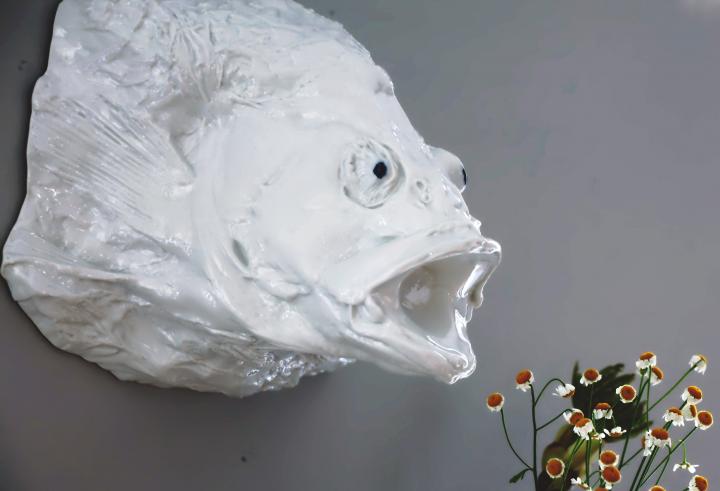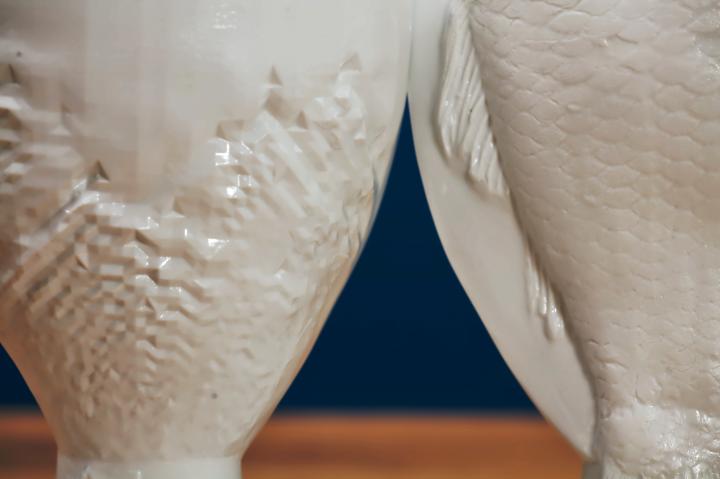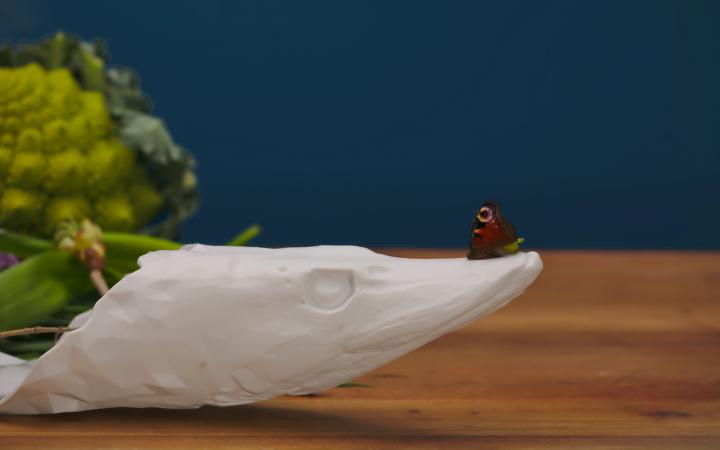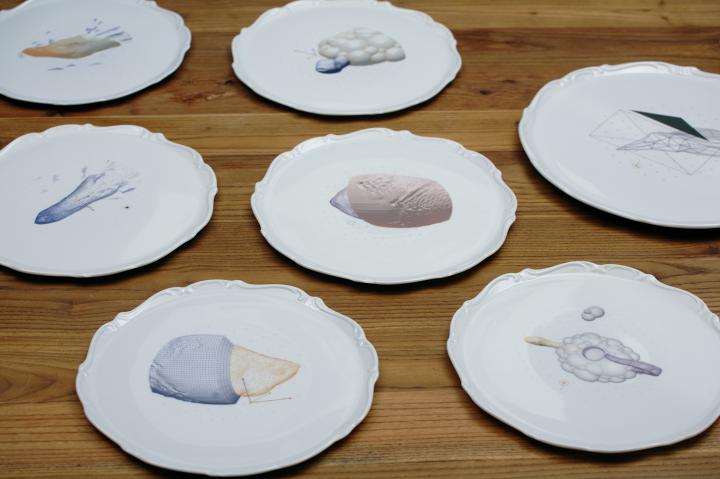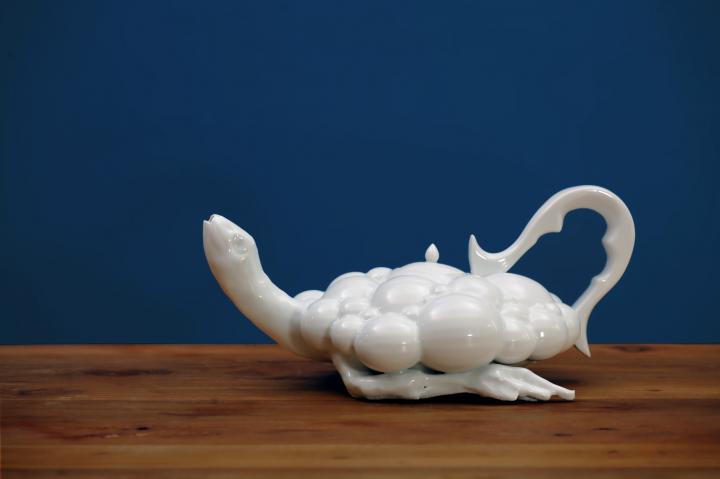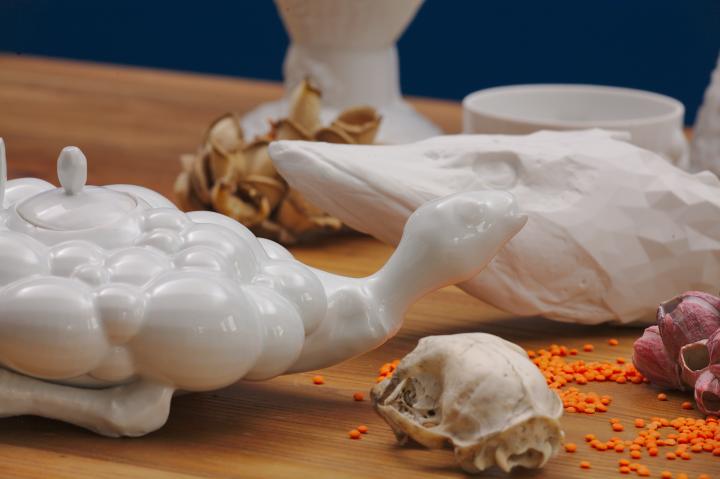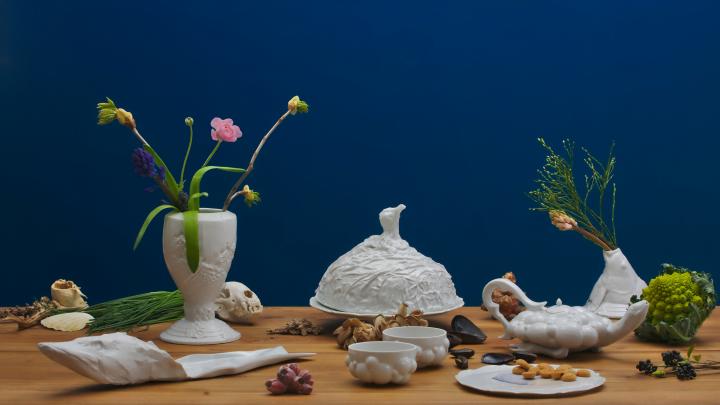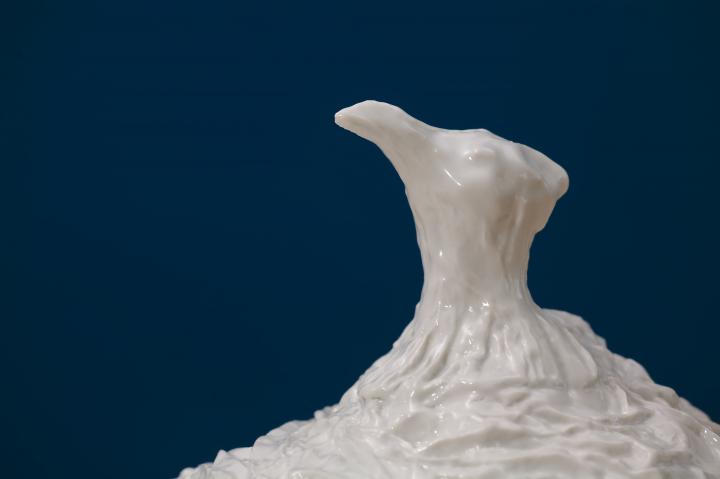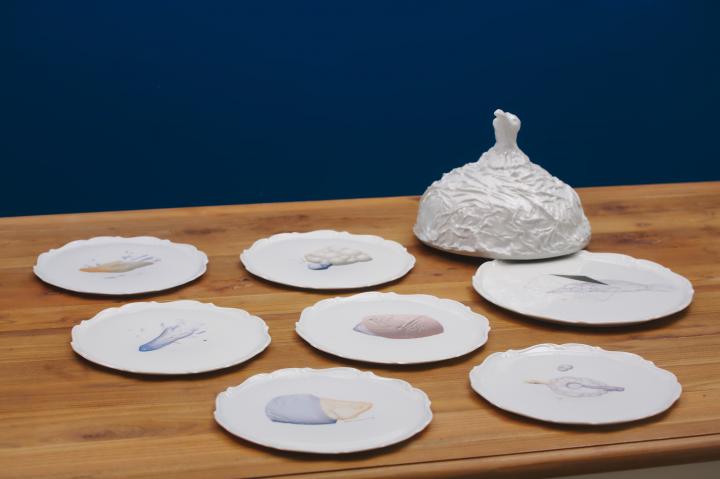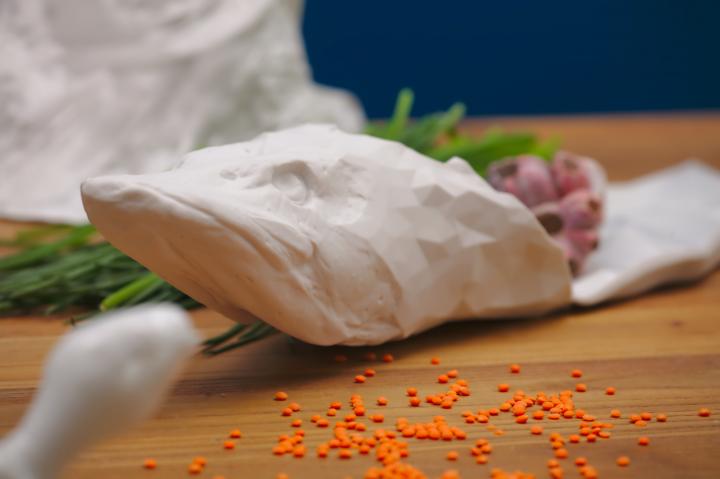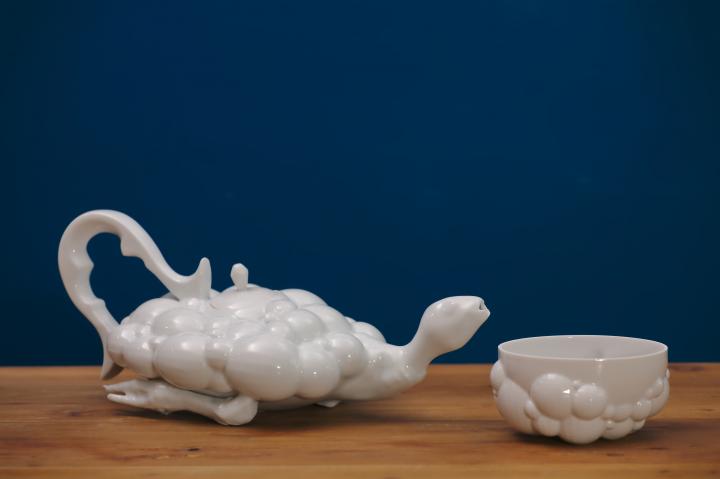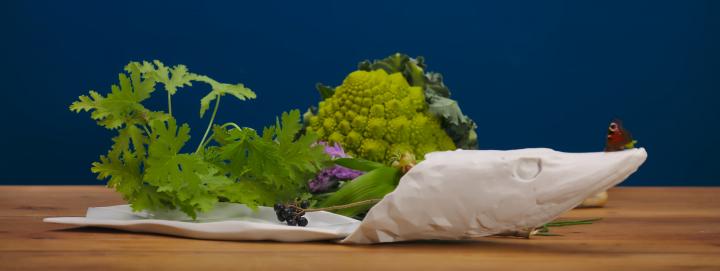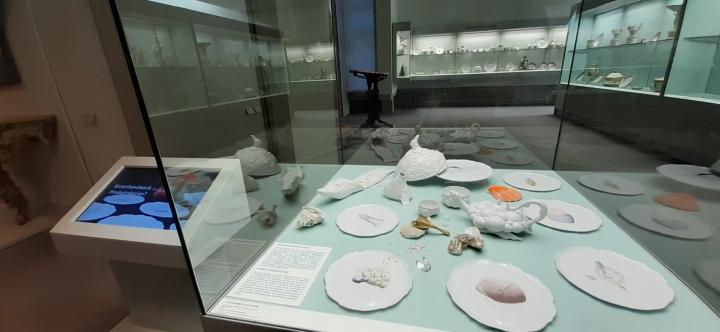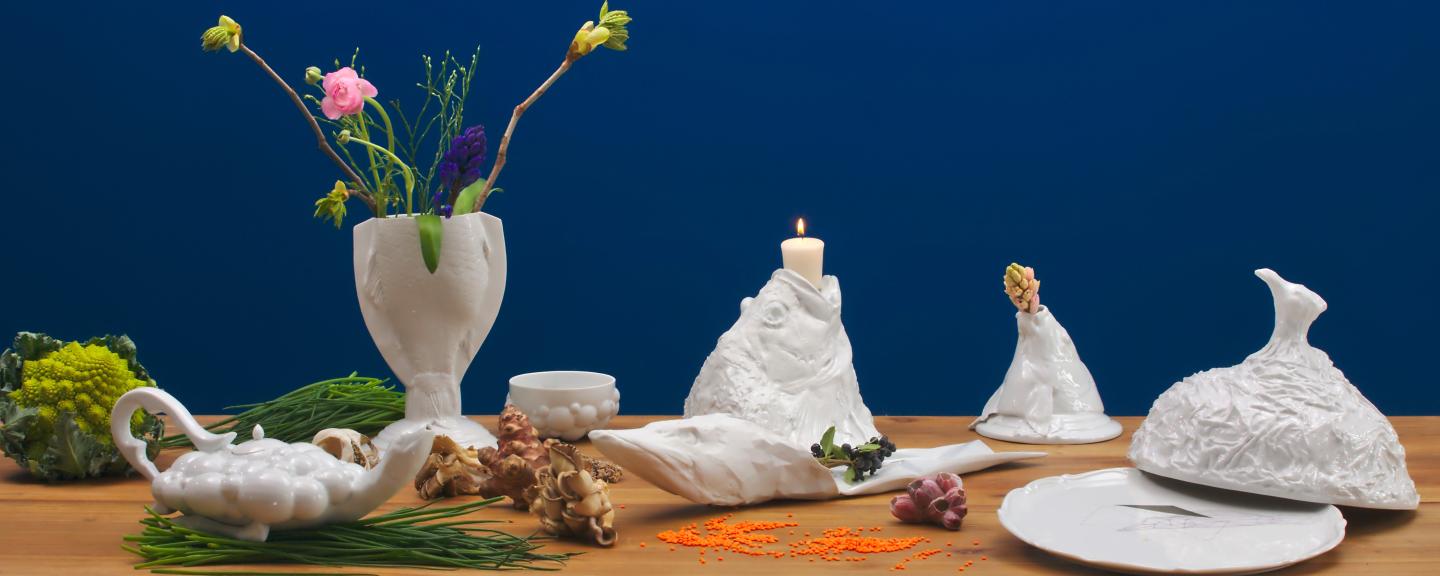
Bestiarium
А series of fragile porcelain hybrid creatures, is the result of an experimental collaboration with the design studio SHAPES IN PLAY. The project combines analogue and digital approaches to design in an unconventional and playful manner. The two studios worked in parallel to develop each object and the final result shows the interplay between the design processes.
The characters of the Bestiarium represent the hybrid nature of our times: they embody analogue and digital technologies and offer organic and generated forms. The end result is a set of useful and decorative objects that provoke as well as proffer. What is the relationship between Nature and technology in our increasingly virtual, fast-paced, and interconnected world? What is real? What is natural? What do we believe?
The history of using composite creatures to express intriguing yet frightening technological and social developments has a long history. For example, during the uncertain times leading up to the Reformation, the Dutch painter Hieronymus Bosch (1450-1516), created a triptych called The Garden of Earthly Delights featuring creatures that are both marvelous and monstrous. These creatures invite us to contemplate the ambivalent character of progress and the relationship between Nature and technology.
A real fish was used to create a mold in order to preserve authentic and realistic detail. The model fish’s shape, meaning, and function were then extended using digital design and a 3D printer. The two pieces were merged together to create vases and serving vessels.
A body in bubble structure was generated using an algorithm. The basic form was enriched using molded body parts resulting in teapot that is also a fabulous being.
Bestiarium is part of the permanent collection at on display at the Kunstgewerbemuseum Berlin
